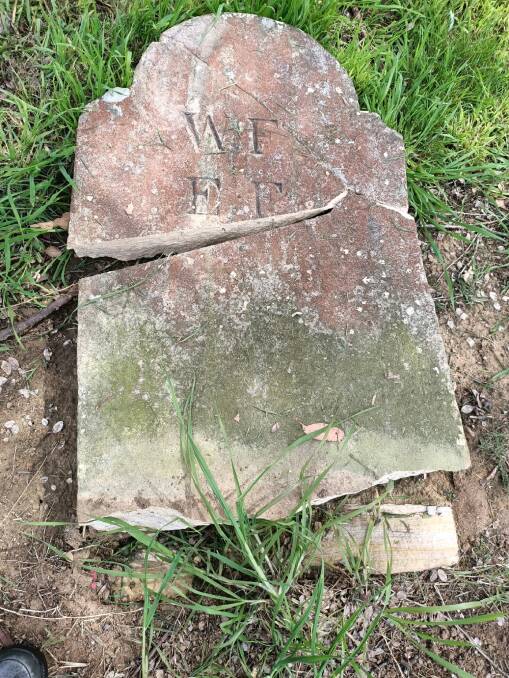
Vandalism in old Hawkesbury graveyards has struck again.
This time, it was the desecration of a grave marker in St Matthew's Anglican cemetery. It may be only one of the smaller markers and the owners of the grave may have become almost unknown, but, the grave, being one of the oldest in the important State-listed historic cemetery that forms part of our history and of the iconic St Matthew's complex, it is important.
It is part of the telling of the story in death of the hierarchy of the early settlement in life, and in this respect it is as vital as that of the largest stone or the most well-known burial. Its recent vandalism is not to be left unremedied.
With no known relatives alive to repair the grave marker, the burden falls on the small parish involved, as happens throughout the district.
Hawkesbury Historical Society is stepping up to help remedy such occurrences.
The Society has established a crowd-funding venture to let others similarly interested in history have the opportunity of assisting. It is hoping to raise $5,000 towards vandalism repair.
Research by Michelle Nichols and Jan Barkley-Jack on behalf of the Hawkesbury Family History Group and Hawkesbury Historical Society has brought the very sad story of WF and EF to light.
When Elizabeth Chaffrey arrived as a convict from Dublin in 1796 her future partner, William Freeman, aged 22 years had already been in the Colony four years having arrived on the Royal Admiral. He was likely still a prisoner, after being sentenced for stealing three wooden casks with hoops, although there seems doubt as to whether he actually stole them.
Elizabeth and William had their first child, William jr, in 1797 and another son in 1801 when they were living at Hawkesbury.
William then received his first land grant at Parramatta and purchased more land to farm where the couple lived with their growing family. Elizabeth was caring for William nine-years-old and four children under six including George when he arrived in 1806.
Thomas and Samuel were born in 1809 and 1811. The children were loved but left motherless when Elizabeth died in 1816, at only 36 years old.
The couple had worked hard. William had the trade of a cooper, was likely literate, having a subscription to the Sydney Gazette, and had been of good character in NSW.
Both had served out their sentence and they were supporting themselves and their seven children in the Hawkesbury from around 1814.
The father and his family continued together until William died at the end of winter 1820, and only then were George, Thomas and Samuel placed in the Parramatta Orphan School.
Restoration of this gravestone is vital for the preservation of the history of the early settlement of the Hawkesbury Region.
Your contribution will assist the Hawkesbury Historical Society Inc. maintain the historical integrity of objects which portray the lives of our early settlers.
You can donate via the button "I want to help" on the first page of our web site Hawkesbury Historical Society Inc. [www.hawkesburyhistoricalsociety.org], or donate direct into the Society's bank account as follows, sending us an email with your name and contact: Bank: ANZ Richmond; BSB No. 012874; Account Number 227709583; Identification Grave (your surname).
The Hawkesbury Historical Society Inc. will be offering to all donors the opportunity to participate in a tour of the historic St. Matthews Anglican Church and cemetery at Windsor once the gravestone has been repaired.

